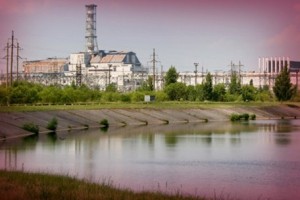
1986 was marked by the events that happened on 26th April, at 1:23 local time. Reactor number 4 of the Chernobyl nuclear power plant that is 62 miles away from Kiev, the capital of Ukraine, suffered a huge explosion to its core.
It was a catastrophe. 28 of the 134 workers who were severely exposed were terminally ill with the radiation syndrome and had only few months to live. Later, 19 more died of different problems. It was predicted that the victims of increased cancer risks will be about 4,000.
The fire which followed the explosion sent radiation in the atmosphere over most of Europe and the former Soviet Union. People in Ukraine, Belarus and Russia were forced to evacuate and be resettled far away, including the whole town of Pripyat, which was the nearest to Chernobyl.
This town was made for the workers in the power plant to live in and has widened and grown in a big, modern city with a young population of 50,000 people. Average age was 26 and there ware 15 primary schools and 5 secondary ones. There were many streets, malls and even an amusement park with a huge Ferris wheel.
Complete evacuation was the expected result of the explosion and was executed the day after. The people took only what they could carry and Pripyat became a ghost city overnight.
The 19-mile area around the reactor is still restricted, but during the 25 years that have passed the radiation levels have decreased and it’s possible to make conducted tours of Pripyat. Soil is, however, still heavily contaminated. Plants have either adapted or died, since they cannot move away.
Martin Hajduch from the Slovak Academy of Sciences has made several experiments and his co-researchers have reported a surprising tendency in plants to adapt to a radiation-contaminated environment.
The researchers tried to grow flax seeds in the contaminated soil in the region of the reactor. The plants were compared with those grown from the same seeds, however, in non-radioactive soil. They found that radiation didn’t affect the protein level of the plants, with difference between the types about 5%.
Hajduch confessed, that he was surprised when he found out about how quickly the environment has adapted to the radiation. It seems that there is a mechanism of some kind inside the plants. Maybe they have been exposed to it ever since the early times of the Earth’s formation.
Back then, there was a lot more radiation on the surface of the Earth than today, and it was also the period when life started evolving, so plants have probably been able to adapt to radioactivity ever since those times, and now that they have been once again exposed do it, they somehow revived that part of themselves.
